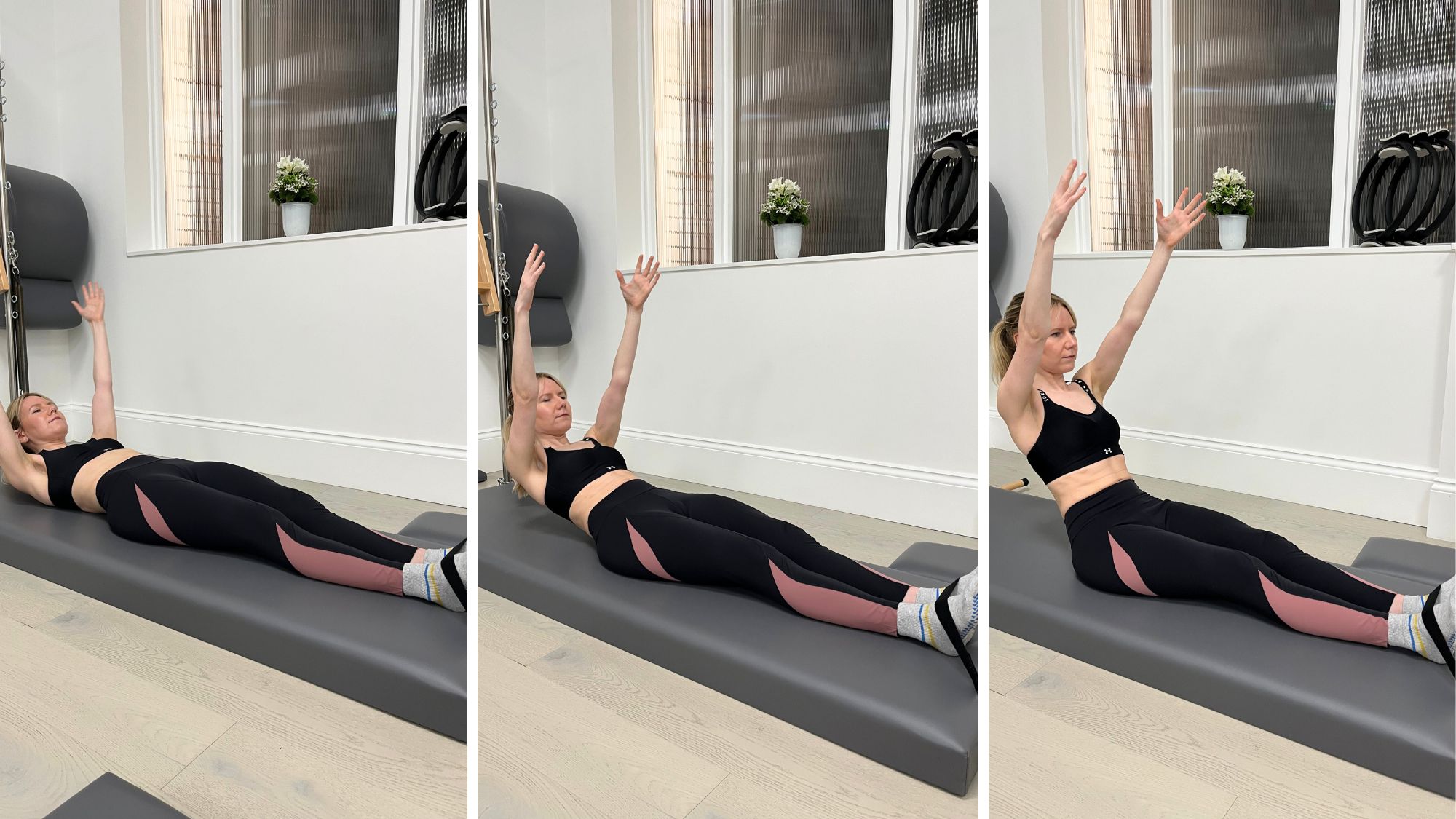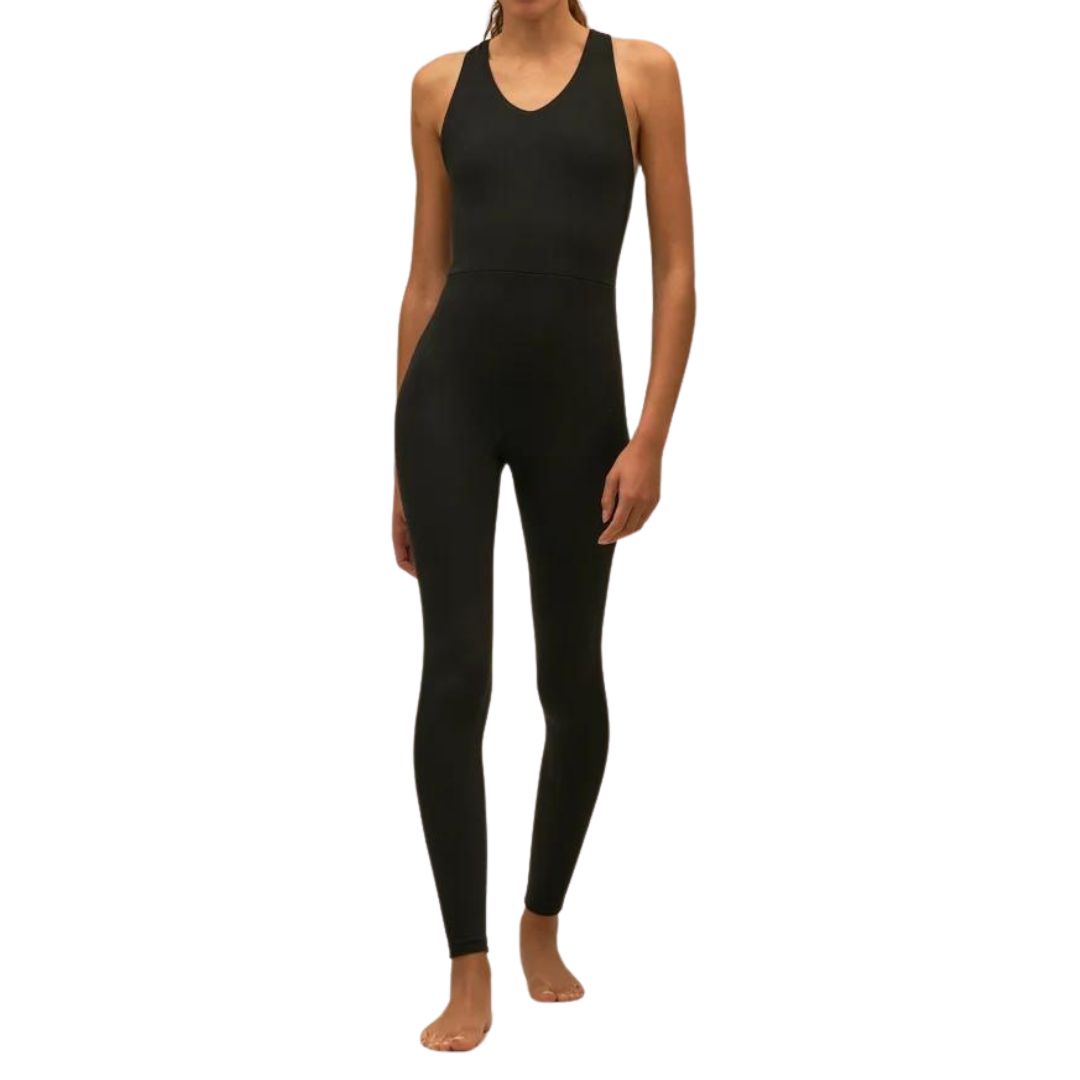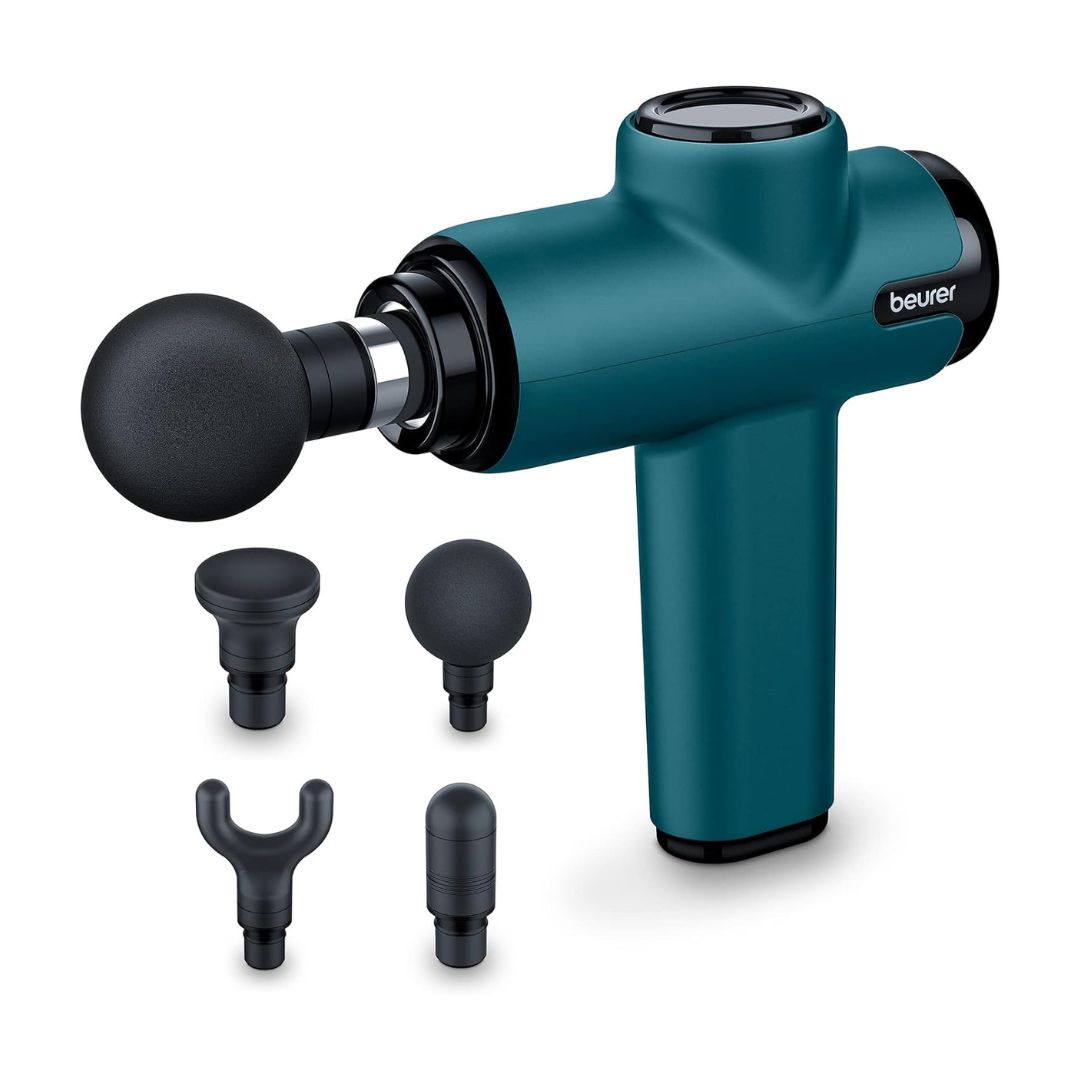I tried a Tower Pilates class - and can confirm the viral fitness trend takes your strength and flexibility to the next level
Move over, Reformer.


You don’t need to be a full-time gym obsessive to know that Pilates has been the hottest workout ticket for some years now. Thanks to rumours that Harry Styles might be lurking in your local reformer studio, as well as the hundreds of Pilates-based challenges that have gone viral on TikTok, the ever-growing workout method has gone from strength to strength.
Seeing as our thirst for torturous bicycle kicks appears to be going nowhere anytime soon, studios have kindly answered our prayers by launching all kinds of weird and wonderful classes that put a fresh riff on the original mat-based workout. The latest you’re soon to be hearing about? Tower Pilates.
Yup, 2024’s hottest piece of gym equipment flips your usual Reformer Pilates class on its head, bringing a vertical resistance challenge to your whole bod.
According to statistics from PureGym, wall Pilates classes (where you use a flat wall as resistance) are one of the largest-growing trends of the year so far, with a huge 4,461 per cent jump in searches. The tower takes things one step further, using a bunch of fancy wall-mounted apparatus to amp up the glute-burning resistance, deepen your stretches and challenge your thoracic spine mobility.
So, why might you consider giving it a go? If you’re wondering what the class involves and how it differs from a Reformer session, we’ve got all the answers you’re looking for. Keep scrolling to get the lowdown - and while you’re here, check out our guide to the best Pilates workouts at home, best Pilates exercises for beginners, and Pilates bar exercises, for levelling up. Keen to invest in your Pilates practice? Shop the best at home Reformer Pilates machines, now.
I tried the Tower Pilates, the buzzy new fitness trend - and have some thoughts
What is Tower Pilates?
As we’ve already mentioned, Pilates workouts come in a variety of forms. The Tower is a type of apparatus that’s mounted vertically onto a studio wall, with a soft crash mat fitted underneath it to protect your joints.
Unlike the Reformer bed, which uses a wobbly moveable carriage to challenge your balance and stability, the sturdy frame of the Tower doesn’t budge. Instead, it’s fitted with spring-mounted arm and leg straps which bring an extra resistance burn to your core, glutes, and biceps.
Celebrity news, beauty, fashion advice, and fascinating features, delivered straight to your inbox!
During the class, you sit, stand, or lie down on the mat and work through a sequence of movements with your hands or feet slipped into the various pulleys, with the aim of keeping controlling the movement of the springs as much as possible.
The Tower also has a wooden bar that can be flipped out and used in a similar way to the wide foot bar that’s perched at the front of a classic Reformer machine.
There's a twist though: it's on springs, so it brings an extra fiery challenge to exercises like glute bridges and side-body stretches.
Who invented Tower Pilates then?
Joseph Pilates came up with the idea - the same guy who invented the original Pilates method in the 1920s. Contemporary studio classes often haphazardly mash together elements of HIIT, cardio and Yoga to create hybrid Pilates workouts.
Classical Pilates is a bit different, as it follows a strict sequence of movements that have remained unchanged for over 100 years. The system, designed by Joseph Pilates, utilises a range of different equipment (like the Tower) that’s designed to help you build the complete coordination of body, mind, and spirit that the practice is famous for.
“Reformer was never meant to be a solo piece of equipment used in traditional Pilates, and neither is the Tower,” says James Shaw, Pilates master trainer at Third Space. “Mastering the full method involves working across all the Pilates equipment, such as the Cadillac, mat, wunder chair, ladder barrel, tower, and spine corrector. Each of these apparatus helps you to progress and improve the different areas of your Pilates practice, whether you need help with strength or flexibility.”
If you book a private session with a Pilates teacher that’s trained in the true, classic method, they’ll usually assess your current fitness level and suggest a training plan that integrates different bits of Pilates equipment to deepen your practice.
Given the general hype around Reformer classes though, Pilates studios have recently started offering standalone Tower sessions so people can build a dynamic and well-balanced practice in their own time.
Which celebrities love Tower Pilates?
Over the past few years, A-listers like Kate Hudson, Miley Cyrus, and Cameron Diaz have all credited Pilates for helping them to stay fit and healthy.
The Tower is basically a more compact version of a Pilates Cadillac, the four-poster bed-like piece of equipment you’ve probably seen heaps of celebs hanging from on Instagram.
If you’ve seen a Cadillac up close and personal, you’ll know it’s a massive piece of equipment, which is why you’ll generally only see it in private 1-1 sessions. The tower takes everything that’s great about the Cadillac and packs it into a smaller space, so everyone can all reap the assistive benefits in more affordable group classes. Happy days.
What are the benefits of Tower Pilates?
Most of us know by now that Pilates is the GOAT when it comes to building lean muscle, developing full-body strength, and improving flexibility and posture.
The Tower basically helps you to sink deeper into those benefits. “Not only do you have an extra strength training challenge coming from the weighted springs, but the movement of the coils also provides direct feedback on how much control you have in your strength and flexibility,” says Shaw.
Jayne Robinson, Pilates instructor and head of brand at Exhale adds that the Tower is useful for pointing out imbalances and misalignments in your body. “When people use the equipment for the first time, they often notice that their thoracic mobility is limited, or their left shoulder is slightly weaker than their right. Getting this sensory feedback from the springs means you can identify any areas of weakness you need to work on.
"It's basically designed to help people improve their Pilates practice, so that they can eventually move onto the mat and be able to hit those deeper stretches and longer lines unassisted. But building this type of ultra-precise strength and flexibility is beneficial for every gym-goer and athlete, whether you lift weights, are a runner, swimmer, or snowboarder."
Pilates is famous for its core strengthening powers, but the Tower is specifically good at building your powerhouse muscles, which start at the bottom of your ribs down to the top of the hip and all the way to the bottom of your pelvis. “If you’re practicing the Tower regularly, you’ll start to feel more strength and stability in the trunk of your body, which can make day-to-day movements like lifting, twisting, and pulling much easier on our joints and muscles," notes Robinson.
Oh, and as it’s low-impact, it doesn’t flood your body with more cortisol, so if you're having a busy work week, it won’t add to your already raging stress levels.
I tried Tower Pilates - and it felt amazing for my back and shoulders
As a fitness writer, I’ve sweated my way through dozens of Reformer classes. So, naturally, I was curious to see whether the Tower had any specific extra benefits - or if its all just a marketing gimmick that isn’t worth your time.
I arrived at Exhale, a light an airy Pilates studio space in central London, ready to give it a whirl. The first thing to know is that there’s a whole new system of rapid clipping and unclipping of the various apparatus to get to grips with between movements, which takes a bit of getting used to.
Set-up aside, the major difference between Reformer and Tower is the extra challenge it brings to your upper body strength and mobility. The classic Pilates roll-up? That's made way harder with the use of a wooden pull and push-through bar, which allows you to reach a fuller range of movement as you rise and lower your arms.
It's the same deal with pulls and curls using the spring-loaded safety straps - these aren’t dissimilar to using the upper-body machines found in a bodybuilder gym. So, you’ll likely leave a Tower session with far more of an arm burn than you would during a standard Pilates class.
Overall, using the Tower feels like a more advanced phase of the mat method - mainly because the various bits of apparatus make sure your core is constantly engaged, so you're not able to slack off at the back of the class.
Not to mention, the mat isn’t sitting on a wobbly carriage, which means tower is less about challenging your core through balance and more about working against brutal resistance. During the class, there’s a heap of attention to straightening out the muscles surrounding the hip, pelvis, chest, and also extending the spine, which is tough but feels amazing after a week spent hunching over a laptop.
My verdict? I absolutely loved it. As we’ve already mentioned, the Tower is designed to help you build the strength and flexibility needed to nail the final Pilates boss: the mat. So if you’re constantly scrolling through TikTok and wondering how to achieve the same strong, lean lines as the experienced Pilates girlies, this is the class that will help you to get there.
Shop MC UK approved fit kit now:

Adanola produce some of the best sports bras, hands down, and we're big fans of this butter yellow colourway.

Liz started her journalism career reporting on fashion at ELLE, GQ and Fashion Beans before finding a love for all things fitness and travel.
Keen to report on her favourite topics, she moved over to the lifestyle desk at The Evening Standard before taking the reins as health and wellbeing editor at news and features agency PA Media. She has also been a senior commissioning editor for the publisher Penguin Random House, finding future bestsellers in the self-development field.
Liz’s features have taken her from fashion front rows to the furthest reaches of the planet, via several hundred sweaty basement gyms in London. Her favourite aspect of her job is getting to write about new trends, whether it’s an under-the-radar travel destination or a TikTok-inspired workout method.
Since going freelance, Liz has written for titles including The Independent, National Geographic Traveller, Stylist, Prospect, Yahoo, and MSN. When she's not writing on her laptop, you'll probably find her at a gig, eating at a new restaurant, or listening to Taylor Swift.

